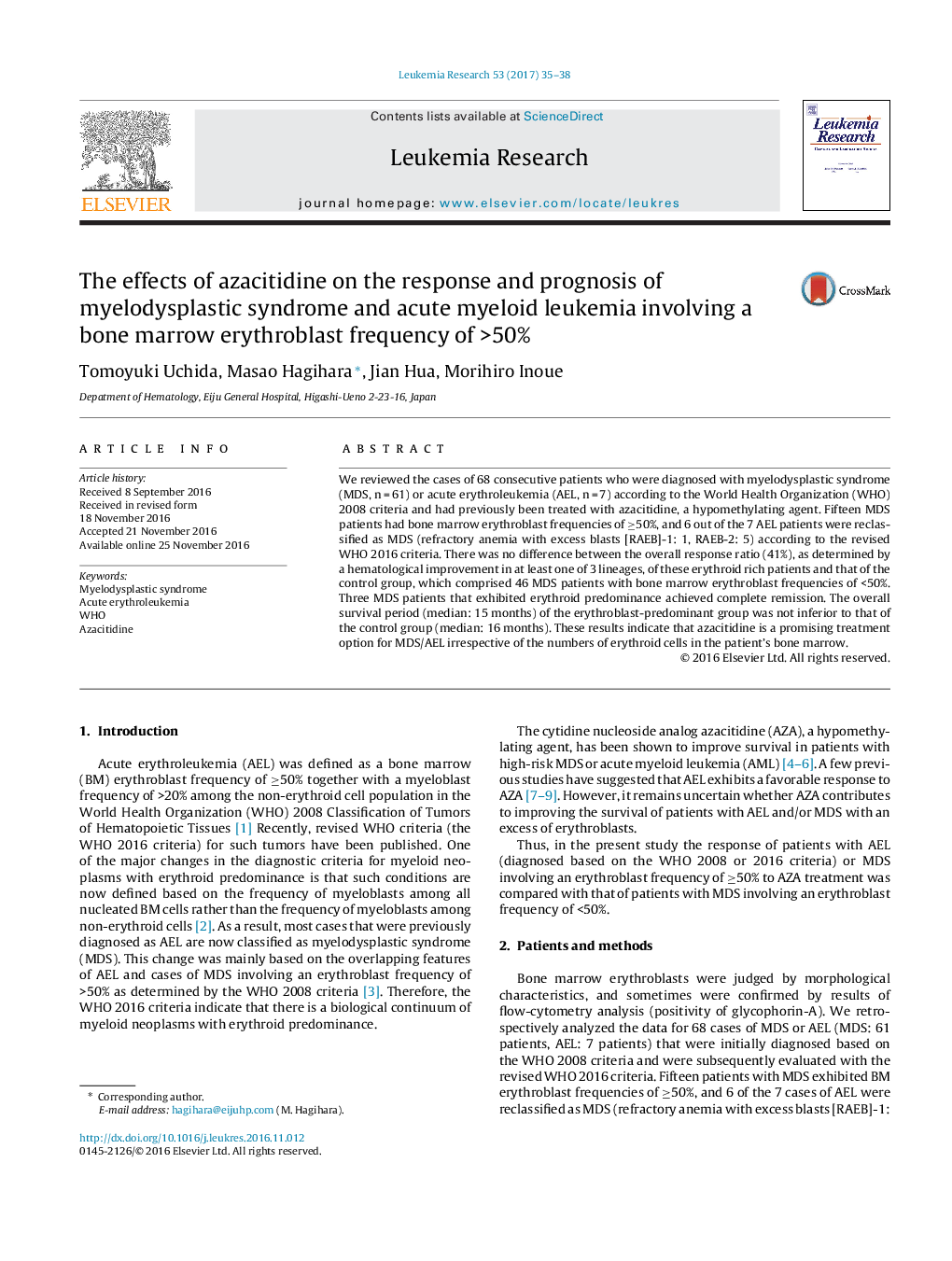| Article ID | Journal | Published Year | Pages | File Type |
|---|---|---|---|---|
| 5527871 | Leukemia Research | 2017 | 4 Pages |
â¢HI could be achieved even if erythroblasts were dominant in BM.â¢The overall survival was also not inferior in erythroblast-predominant group.â¢Azacitidine could be an option irrespective of the numbers of erythroid cells in BM.
We reviewed the cases of 68 consecutive patients who were diagnosed with myelodysplastic syndrome (MDS, n = 61) or acute erythroleukemia (AEL, n = 7) according to the World Health Organization (WHO) 2008 criteria and had previously been treated with azacitidine, a hypomethylating agent. Fifteen MDS patients had bone marrow erythroblast frequencies of â¥50%, and 6 out of the 7 AEL patients were reclassified as MDS (refractory anemia with excess blasts [RAEB]-1: 1, RAEB-2: 5) according to the revised WHO 2016 criteria. There was no difference between the overall response ratio (41%), as determined by a hematological improvement in at least one of 3 lineages, of these erythroid rich patients and that of the control group, which comprised 46 MDS patients with bone marrow erythroblast frequencies of <50%. Three MDS patients that exhibited erythroid predominance achieved complete remission. The overall survival period (median: 15 months) of the erythroblast-predominant group was not inferior to that of the control group (median: 16 months). These results indicate that azacitidine is a promising treatment option for MDS/AEL irrespective of the numbers of erythroid cells in the patient's bone marrow.
